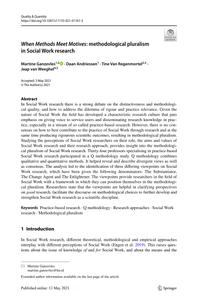The pervasiveness of wearable technology has opened the market for products that analyse running biomechanics and provide feedback to the user. To improve running technique feedback should target specific running biomechanical key points and promote an external focus. Aim for this study was to define and empirically test tailored feedback requirements for optimal motor learning in four consumer available running wearables. First, based on desk research and observations of coaches, a screening protocol was developed. Second, four wearables were tested according to the protocol. Third, results were reviewed, and four experts identified future requirements. Testing and reviewing the selected wearables with the protocol revealed that only two less relevant running biomechanical key points were measured. Provided feedback promotes an external focus of the user. Tailoring was absent in all wearables. These findings indicate that consumer available running wearables have a potential for optimal motor learning but need improvements as well.
DOCUMENT

Aim and objectives: To provide an in-depth insight into the barriers, facilitators and needs of district nurses and nurse assistants on using patient outcomes in district nursing care. Background: As healthcare demands grow, particularly in district nursing, there is a significant need to understand how to systematically measure and improve patient outcomes in this setting. Further investigation is needed to identify the barriers and facilitators for effective implementation. Design: A multi-method qualitative study. Methods: Open-ended questions of a survey study (N = 132) were supplemented with in-depth online focus group interviews involving district nurses and nurse assistants (N = 26) in the Netherlands. Data were analysed using thematic analysis. Results: Different barriers, facilitators and needs were identified and compiled into 16 preconditions for using outcomes in district nursing care. These preconditions were summarised into six overarching themes: follow the steps of a learning healthcare system; provide patient-centred care; promote the professional's autonomy, attitude, knowledge and skills; enhance shared responsibility and collaborations within and outside organisational boundaries; prioritise and invest in the use of outcomes; and boost the unity and appreciation for district nursing care. Conclusions: The preconditions identified in this study are crucial for nurses, care providers, policymakers and payers in implementing the use of patient outcomes in district nursing practice. Further exploration of appropriate strategies is necessary for a successful implementation. Relevance to clinical practice: This study represents a significant step towards implementing the use of patient outcomes in district nursing care. While most research has focused on hospitals and general practitioner settings, this study focuses on the needs for district nursing care. By identifying 16 key preconditions across themes such as patient-centred care, professional autonomy and unity, the findings offer valuable guidance for integrating a learning healthcare system that prioritises the measurement and continuous improvement of patient outcomes in district nursing.
DOCUMENT

In Social Work research there is a strong debate on the distinctiveness and methodological quality, and how to address the dilemma of rigour and practice relevance. Given the nature of Social Work the field has developed a characteristic research culture that puts emphasis on giving voice to service users and disseminating research knowledge in practice, especially in a stream of so called practice-based research. However, there is no consensus on how to best contribute to the practice of Social Work through research and at the same time producing rigourous scientific outcomes, resulting in methodological pluralism. Studying the perceptions of Social Work researchers on their role, the aims and values of Social Work research and their research approach, provides insight into the methodological pluralism of Social Work research. Thirty-four professors specialising in practice-based Social Work research participated in a Q methodology study. Q methodology combines qualitative and quantitative methods. It helped reveal and describe divergent views as well as consensus. The analysis led to the identification of three differing viewpoints on Social Work research, which have been given the following denominators: The Substantiator, The Change Agent and The Enlightener. The viewpoints provide researchers in the field of Social Work with a framework in which they can position themselves in the methodological pluralism. Researchers state that the viewpoints are helpful in clarifying perspectives on good research, facilitate the discourse on methodological choices to further develop and strengthen Social Work research as a scientific discipline
DOCUMENT
